Dear Annie, do you have any suggestions to help heal a postpartum vaginal prolapse I am 41-year old and have recently (6 weeks ago) delivered my first child, a baby boy. It was a difficult birth that resulted in a second degree prolapse between the wall of my bladder and rectum.
Thank you for reaching out and congratulations on the birth of your son. Unfortunately prolapse is not uncommon after childbirth. In fact, vaginal delivery is the number one cause for any kind of pelvic organ prolapse. The prolapse can happen right away, as it did with you, or several years later.
About Postpartum Prolapse
Believe it or not, about 50% of women experience some form of postpartum prolapse. A pelvic organ prolapse occurs when the abdominal organs slip down or forward into the vagina. The organs most associated with prolapse after childbirth are the uterus, colon, and bladder. This happens when the ligaments and connective tissues that hold these organs in place become stretched and weakened. See “Natural Solutions for Abdominal Organ Prolapse” for more information and the anatomy involved.
During pregnancy, hormonal changes cause connective tissues body wide, including those of the uterus, to soften, loosen and lengthen. This loosening of ligaments, particularly in our abdominal region allows space for the child to grow and is an essential preparation for childbirth. At the same time, these same tissues are asked to carry increasing amounts of weight as the baby grows. All of this is designed for the baby to move out through the vaginal opening at delivery.
Unfortunately, this loosening, along with a sudden empty space, can also cause the prolapse. This is also why Postpartum prolapse is almost as common for woman who have had cesarean deliveries as they are for those who have vaginal deliveries.
Fortunately, the body is an amazing and intelligent being designed to heal itself. Our job is to support, and when necessary, augment, the natural healing process.
Stages and Symptoms of Postpartum Prolapse
Vaginal Prolapses are measured in stages.
- Stage 1- A mild prolapse, the uterus has dropped into the upper part of the vagina, or a part of the vagina “folds” or collapses.
- Stage 2 – The prolapse has worsened, descending toward the opening of the vagina.
- Stage 3 – The uterus has fallen beyond the outside of the vagina.
- Stage 4 – The uterus is completely outside the vagina.
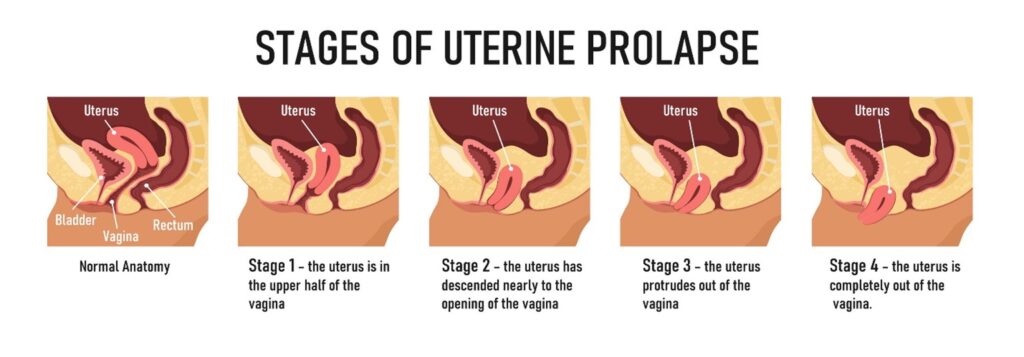
Some women with mild prolapse have few or no symptoms. Others may feel very uncomfortable. The most common symptoms of a mild (stage 1 or 2) prolapse include:
- Vaginal heaviness
- The feeling that something is off or wrong in the vagina, (like a tampon is lodged incorrectly)
- Constipation
- Increased swelling in the genital area.
Natural Solutions
Luckily, nature has foreseen these problems and many of the answers are set up to happen naturally. The body knows how to repair itself and usually does so within a few months. Under normal circumstances, the uterus takes between 6 and 8 weeks to shrink to “normal size.” After a difficult birth, it can take longer to repair itself, sometimes as long as 6 months. But usually, mild prolapses are restored much sooner.
As the uterus shrinks, reproductive tissues become increasingly toned.
Following are some strategies that can aid in the restorative process:
Breast feeding
Breast feeding is an important part of the healing process. This simple, natural act releases the hormone oxytocin, also known as the “love” hormone. Oxytocin helps restore the body after childbirth by helping control bleeding and stimulating uterine contractions which begin to decrease the size of the uterus. As the uterus contracts, the tone of overworked reproductive tissues is reestablished.

Rest after Childbirth
Childbirth, whether by vaginal delivery or cesarean is called “labor” for a reason. It is not easy. After the birth, rest; listen to your body and spend time taking care of yourself and your baby. Avoid standing or sitting for prolonged periods. Walking is important, but don’t push yourself. Take it slow and easy, especially after a difficult birth. Give yourself several weeks to recover your strength and vitality.
Elevate the pelvis
Lying on your back with the pelvis slightly elevated may reduce swelling, alleviate vaginal discomfort, and help organs return more quickly to their natural positions.
Try lying on your back with a pillow or blanket comfortably under your hips. I like to elevate my legs by placing them on a chair. Some people prefer to extend their legs up the wall. Other ideas may include putting a brick under the foot of the bed or even relaxing in a recliner as long as the hips are elevated a few inches above the rest of the torso.
Sitz Bath
A sitz bath is a kind of hydro or water therapy involving sitting in warm shallow water. The intent is to increase circulation to and bring healing energy (called prāṇa in yoga therapy) to the lower pelvic area, the genitourinary organs and between the legs. Sitz baths provide amazing benefits for women after childbirth and to those experiencing pelvic organ prolapse. These simple little baths decrease inflammation, while soothing and healing the vaginal area and the perinium. Click here for more information about sitz baths.
Maintain Healthy Bowel Movements
With any type of pelvic organ prolapse, but especially with a postpartum prolapse involving the colon, it is important to keep bowel movements soft. Avoid constipation, straining during movements, and diarrhea. A Diet rich in fiber, which includes variety of colorful vegetables, is likely to harmonize elimination over time. Additionally, cooked vegetables are usually easier to digest, assimilate, and pass.
In the short term, I like to use the Ayurvedic supplement Triphala, which tones the whole digestive system, while preventing constipation, diarrhea and keeping feces soft. For more information about Triphala click here.
Yoga and Yoga Therapy
Yoga is a holistic science that addresses the entire human system.
A yoga practice after a difficult birth will not look like something seen on TV or in a yoga studio. The practice will be progressive and personalized. It will start slowly then add new tools as wellness and harmony improves.
You will likely begin with gentle breathing practices, adding gentle arm movements after a week or so. As healing progresses, more poses are added to include those that strengthen the lower back, abdomen and back. Each person is different. Each practice designed to meet individual needs.
Herbs and Postpartum Prolapse
Birthing problems and reproductive health have been concerns for mothers and healers for, well, pretty much ever. Today, we are blessed with a wealth of knowledge about plants to help prepare the body for birthing, then recover from it. Listed below are some of my favorite plants for recovering from postpartum prolapse:
Raspberry leaves (Rubus idaus)
Raspberry leaves are a reproductive tonic that tone and support uterine muscles and ligaments. Raspberry leaves are commonly used to balance and vitalization to the reproductive organs. It can be used before and after the birth to normalize tissues, reduce bleeding, and prevent or restore prolapsed tissue.

In my experience Raspberry leaves are best used for the purpose of postpartum prolapse as a tea and added to a sitz bath.
Horsetail (Equistetum arvense)
Horsetail herb supports the regeneration and growth of bone and connective tissue. It’s anti-inflammatory and astringent properties make it a useful addition to a sitz bath. But it also works well in a tea or tincture. Use it to help sooth inflammation while healing and adding tone to sagging tissues.

Our Lady's Mantle (Alchemilla vulgaris)
A wise woman herb, Our Lady’s Mantle, has been used for centuries to prepare the body for childbirth. Then after the birth to reduce inflammation and restore tissues. It works as a rejuvenating tonic with an affinity for the hollow organs. That means Our Lady’s Mantle helps restore sagging prolapse tissue including the vagina, uterus, bladder, and colon.
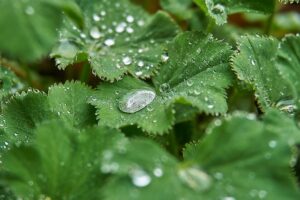
Trauma is another word associated with Our Lady’s Mantle. Its use not only helps the body recover from the trauma of birth, but it also offers a calming and protective energy that supports and calms the mind, and emotions after a trauma to the pelvic or reproductive organs (like childbirth).
True Solomon’s Seal (Polygonatum multiflorum)
I love this herb. True Solomon’s Seal helps restore proper tension to ligaments, whether too tight or too loose. Sometimes only a few drops are all you need to feel healing begin. The herb feeds and lubricates ligaments, tendons, and muscle attachments, resulting in stronger and more harmonious functioning.

Yet, Solomon’s Seal has a softening quality, providing soothing comfort for overworked mucus membranes. Plus, it helps calcify bones, making them stronger. Like I said, I love this herb.
Recipes
- Postpartum Prolapse Sitz Bath
- 2 parts True Solomon’s Seal (Polygonatum multiflorum)
- 2 parts Our Lady’s Mantle (Alchemilla vulgaris)
- 1 part Horsetail (Equistetum arvense)
- 1 part Raspberry Leaves (Rubus idaus)
Pour 1-quart boiling water over ½ cup (a large handful) of herbs. Cover and let steep for 20 minutes. Strain into sitz bath pan or bathtub, adjust water temperature and depth. Enjoy for 20 minutes.
A Personalized Approach
Holistic strategies including herbal remedies, and yoga therapy are not based on a one-size-fits-all-approach. Every person is seen as a unique individual. Everyone has their own experience, history, and constitution. All of this is taken into consideration before suggestions and protocols can be put in place. Even when symptoms appear similar the approach needed may be very different.
Further Reading
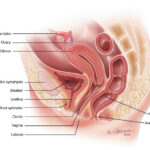
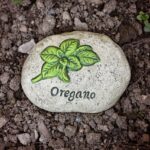


Healing the causes of suffering – A four-step model for healing




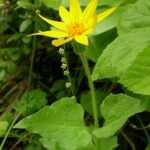






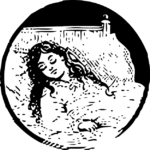


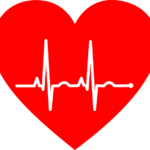



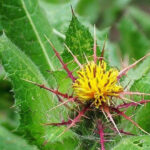





References
Disclaimer
The statements and ideas presented here are not intended to diagnose, treat, cure, or prevent any disease or condition. They have not been evaluated by the FDA. All ideas presented are for the sole purpose of education. To help you take control of your own health. If you have a health concern or condition, consult a physician. We suggest that you always consult a medical doctor before modifying your diet, using any new product, drug, supplement, or doing any new exercises.
These statements and products have not been evaluated by the FDA. They are not intended to diagnose, treat, cure, or prevent any disease or condition. If you have a health concern or condition, consult a physician. Always consult a medical doctor before modifying your diet, using any new product, drug, supplement, or doing any new exercises.
Herbs taken for health purposes should be treated with the same care as medicine. Herbal remedies are no substitute for a healthy diet and lifestyle. If you are serious about good health, you’ll want to combine diet, exercise, herbals, a good relationship with your doctor and a generally healthy lifestyle. No one of these will do it alone.
This information is designed to be used as part of a complete health plan. No products are intended to replace your doctor’s care, or to supersede any of his/her advice or prescriptions.

